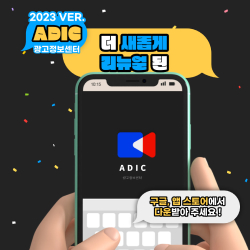- [나스미디어]2024년 11월 2025 디지털 미디어 & 마케팅 전망
- [2025년 7월] 2025 상반기 디지털 미디어 & 마케팅 결산
- [플레이디] 2025 광고·마케팅 트렌드 전망 리포트
- [2025년 5월] 2025 NPR 요약보고서
- 기아차 SOUL의 혁신적인 제품전략 -소비자의 soul을 움직이다-
- [2024년 12월] 한 장이면 고민 끝! 2025 마케팅 이슈 캘린더
- [CJ?메조미디어] 2025 타겟?리포트_50대
- 조선-중앙-동아일보의 유사성과 차별성:1면 구성과 사설의 이념성을 중심으로
- [Case Study] 디지털 미디어 광고 사례
- [인크로스]2025년 1월 미디어 이슈 리포트
자료요약
환경 지속 가능성에 높아진 관심에 기반하여 다양한 친환경 제품이 출시되고 있다. 소비자 들이 구매하는 친환경 제품은 제품의 단순 재활용을 의미하는 리사이클링 제품과 추가적 가치를 부여한 업사이클링 제품으로 구분할 수 있다. 이에 기반하여 본 연구는 친환경 제품 유형 과 메시지 프레이밍의 상호 작용 효과를 검증하였다. 실험 결과, 단순 재활용 제품인 리사이클링 제품의 경우, 향상 초점 메시지에 비해 예방 초점 메 시지로 제시되었을 때 참여자들은 제품과 광고 메시지에 더욱 긍정적인 태도를 보인 반면, 추가 적 가치가 부여된 업사이클링 제품의 경우, 예방 초점 메시지에 비해 향상 초점 메시지로 되었을 때 제품과 광고 메시지에 더욱 긍정적인 태도를 보이는 것으로 나타났다 (실험 1). 또한 친환경 제품 유형과 메시지 프레이밍의 상호작용이 제품과 광고 메시지에 보이는 태도를 처리 유창성이 매개하는 것을 검증하였다 (실험 2). 마지막으로 연구 결과를 바탕으로 이론적 시사점과 실무적 시사점, 그리고 미래 연구 방향을 제시하였다.
Growing concerns about environmental sustainability are driving companies to develop various eco-friendly products in the market. Eco-friendly products could be divided into recycling products which refer to simple recycling of products, and upcycling products which add additional values beyond simple recycling. Despite the increased interest in eco-friendly products, researches on effective marketing communication for eco-friendly products are insufficient. Therefore, this research examines the interaction effect between eco-friendly product types and message framing on attitude toward advertisement and products. Study 1 showed that participants showed a more positive attitude toward advertisements and products for recycled products when presented with prevention framing messages (vs. promotion framing messsages), whereas for upcycling products, participants showed a more positive attitude toward when presented with promotion framing message (vs. prevention framing message). In addition, the process fluency and fit (feeling right) mediates these effect (Study 2). Based on the results, the research provides theoretical implications, practical implications, and the directions for future research.
Growing concerns about environmental sustainability are driving companies to develop various eco-friendly products in the market. Eco-friendly products could be divided into recycling products which refer to simple recycling of products, and upcycling products which add additional values beyond simple recycling. Despite the increased interest in eco-friendly products, researches on effective marketing communication for eco-friendly products are insufficient. Therefore, this research examines the interaction effect between eco-friendly product types and message framing on attitude toward advertisement and products. Study 1 showed that participants showed a more positive attitude toward advertisements and products for recycled products when presented with prevention framing messages (vs. promotion framing messsages), whereas for upcycling products, participants showed a more positive attitude toward when presented with promotion framing message (vs. prevention framing message). In addition, the process fluency and fit (feeling right) mediates these effect (Study 2). Based on the results, the research provides theoretical implications, practical implications, and the directions for future research.
목차
요약
1. 서론
2. 이론적 배경 및 가설
1) 친환경 제품 유형
2) 메시지 프레이밍과 처리 유창성(process fluency)
3) 가설 설정
3. 실험 1
1) 실험 절차
2) 측정 문항
3) 실험 결과
4) 실험 1 결과 논의
4. 실험 2
1) 실험절차
2) 측정 문항
3) 실험 결과
4) 실험 2 결과 논의
5. 결론
1) 연구 결과
2) 연구의 시사점
3) 연구의 한계점 및 향후 연구방향
참고문헌
Appendix
Abstract
1. 서론
2. 이론적 배경 및 가설
1) 친환경 제품 유형
2) 메시지 프레이밍과 처리 유창성(process fluency)
3) 가설 설정
3. 실험 1
1) 실험 절차
2) 측정 문항
3) 실험 결과
4) 실험 1 결과 논의
4. 실험 2
1) 실험절차
2) 측정 문항
3) 실험 결과
4) 실험 2 결과 논의
5. 결론
1) 연구 결과
2) 연구의 시사점
3) 연구의 한계점 및 향후 연구방향
참고문헌
Appendix
Abstract











